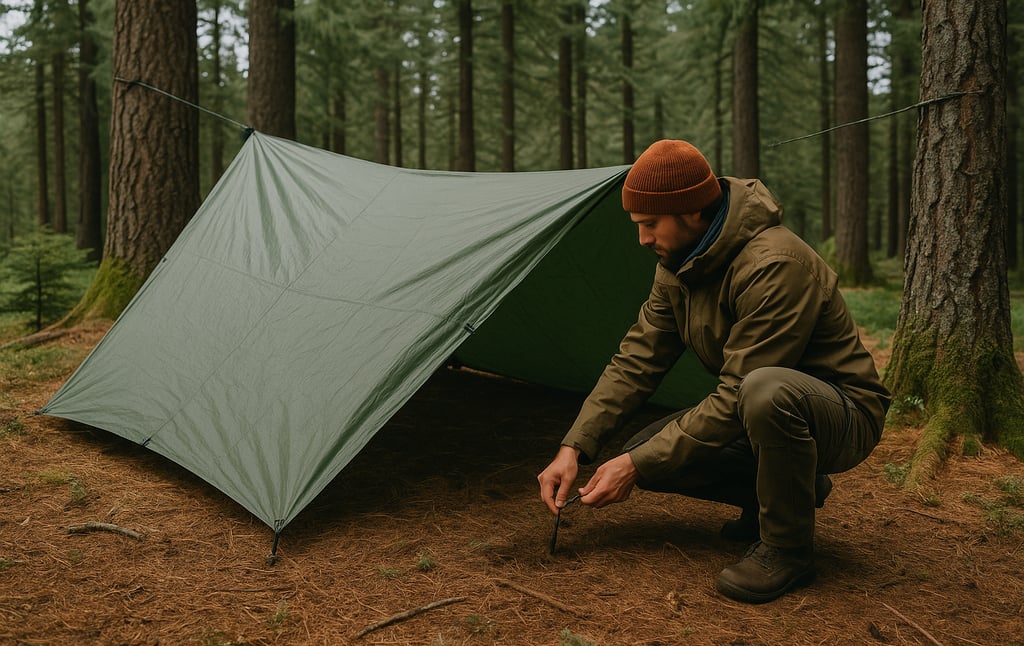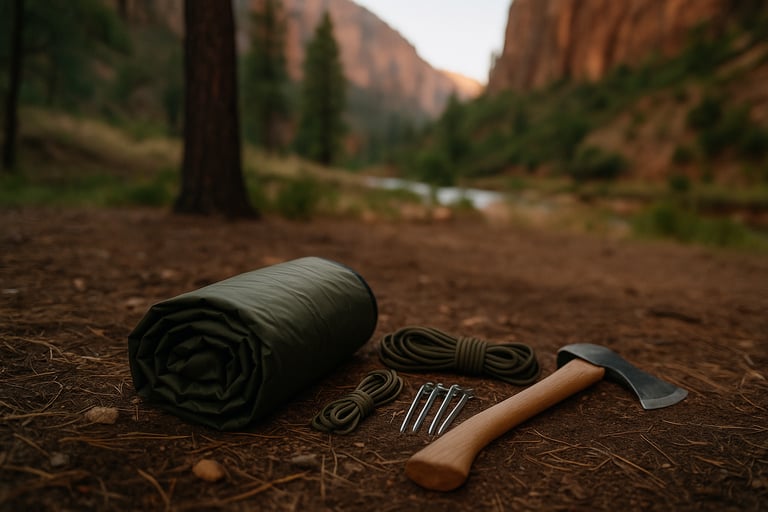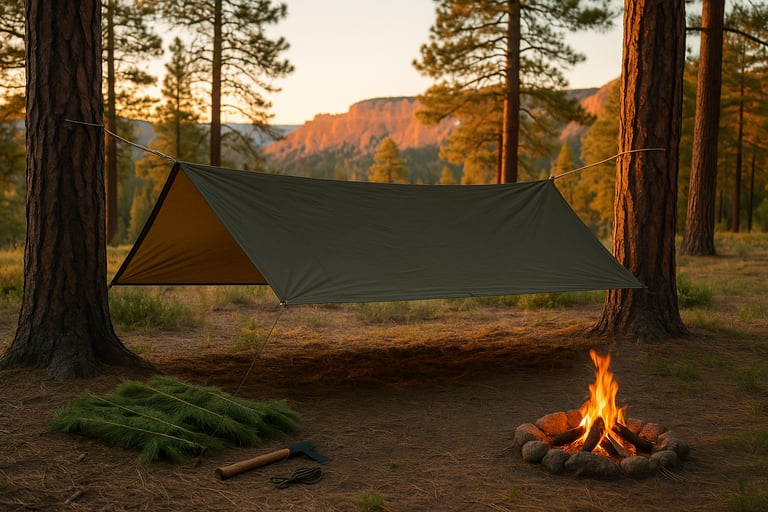How to Make a Poncho Shelter: Quick and Reliable Rain Protection in the Wild
Learn how to build a poncho shelter using simple materials in minutes. This guide shows how to turn your poncho into an effective emergency shelter to keep you dry, warm, and protected in the wilderness.


How to Make a Poncho Shelter: Quick and Reliable Rain Protection in the Wild
If you find yourself caught in the rain in the backcountry with limited gear, a poncho shelter might be the quickest and most effective way to stay dry. Lightweight, compact, and incredibly versatile, a poncho is one of the most underrated survival tools out there.
With just a few minutes and a little practice, you can transform a simple rain poncho into a life-saving emergency shelter. Whether you're waiting out a storm or setting up a quick overnight camp, knowing how to make a poncho shelter is a survival skill everyone should have in their back pocket. You can also learn how to build a tarp shelter if you have a bit more gear and want a more spacious setup.
Let’s go through how it works, what setup options you have, and how to get the most weather protection possible from just a single piece of gear.
Why Choose a Poncho Shelter for Survival?
The main benefit of a poncho shelter is speed. You can deploy one in minutes, which makes it ideal when weather moves in fast or when you’re too exhausted to build a full structure. Ponchos are also ultralight and often pack down to the size of a sandwich, which means they’re great for minimalist hikers, bushcrafters, or anyone practicing emergency preparedness.
They’re also surprisingly effective. When rigged correctly, a poncho shelter can keep out rain, wind, and even cold air, especially when paired with a fire or insulating bed underneath.
What You’ll Need to Build One
To make a proper poncho shelter, you’ll need a durable poncho with grommets or tie-off points in the corners. Most military-style ponchos come with these built-in, but you can also reinforce your own if needed.
You’ll also want some paracord, rope, or even natural cordage to use for tying the poncho to trees or poles. In a pinch, sticks and stones can also be used to weigh down the edges or create tension. A couple of sturdy branches or trekking poles can help with upright support if no trees are available.
Step-by-Step: Setting Up a Basic Poncho Shelter
The classic method is the A-frame setup, which gives you good protection and is easy to build. Start by tying a ridgeline between two trees, about waist height. Drape the poncho over the line so it hangs evenly on both sides. Secure the corners to the ground using stakes, sticks, or rocks. This creates a triangular wedge shape that sheds rain and blocks wind. If you're in a snowy or windy environment, a lean-to shelter may offer better coverage and durability.
If it’s raining hard and you want faster setup, you can use a lean-to configuration. Simply tie one edge of the poncho to a horizontal branch or ridgeline, and then stake the other side down to the ground at an angle. This gives you a quick windbreak or rain shield and works well in mild to moderate conditions.
Leave the hood closed and sealed if possible, or tie it shut so water doesn’t leak through.
Making It More Secure and Comfortable
Use tension when tying down the poncho, a flapping shelter won’t protect you well and will wear out the material. If your poncho is thin or lacks reinforced corners, you can wrap small rocks in the fabric and tie cord around them as makeshift anchor points.
To improve warmth and comfort, add an insulating layer underneath your shelter like a bough bed or a pad of dry leaves (Here’s how to build a bough bed shelter for warmth and elevation off the ground). You can also hang a space blanket on the inside to reflect heat back toward your body.
If you plan to sleep under the poncho, dig a shallow trench around the edges to help channel rain away from the shelter.
When to Use a Poncho Shelter in the Wilderness
Poncho shelters are perfect for short-term emergencies, unexpected weather, or ultralight overnight camps. They aren’t as durable or warm as log or brush shelters, but they shine when speed and portability matter most.
If you’re traveling light or hiking solo, always keep a poncho in your pack. When paired with a little knowledge and some basic gear like paracord and stakes, it can become your go-to shelter solution when time is tight and weather turns nasty.




© 2025. All rights reserved About | Privacy Policy | Terms and Conditions | Affiliate Disclosure | Disclaimer


